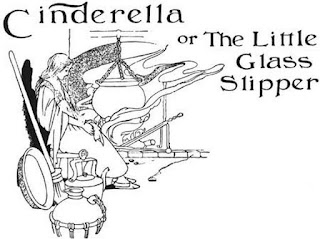Jack and the Beanstalk
Jack and the Beanstalk, illustrated by Charles Robinson
The story about a boy who challenges a giant is among the best-known tales in the world. Less known is the fact that writers tried to improve the plot for centuries.
What is the obvious problem? Jack enters the giant's castle and starts stealing stuff. While our sympathies are obviously with the boy and not with the man-eating giant, his actions are still questionable from a moral point of view. What gives him the right to take the giant's possession?
Are we sending the wrong message to our children? Will they grow up believing that stealing is okay?
So several writers and editors tried to improve the fairy tale by adding a so-called pre-story. Jack wasn't a poor boy or at least he shouldn't be. His father was rich and good-hearted. But the evil giant who was jealous of his good heart and possessions took everything from the family including the life of Jack's father.
Yes. Such an explanation looked all right to some of the best minds in the world who got a chance to influence millions of minds of young readers.
They didn't care about the lost suspense in the story (every explanation destroys the rhythm and the flow).
They didn't care about the logic (taking properties from one world and taking them into a fantasy world above the clouds, having his mortal enemies in prison and releasing them, ...).
They didn't care about the psychological effect (defeating the monster is always okay, and the giant actually represents a father figure).
The list could be much longer but you probably got the idea.
So here we are, with an introduction where we meet Jack's father. He looks worried. He is probably in danger. What to do?
The plan is simple. His wife and child should run away and he will wait for a sure death. Yes, this should do it.
Years have passed and Jack's mother raised her only son in poverty. Somehow they managed to live in a hut and have a cow (it was probably following them when they ran from the giant). Mother for some reason never told Jack about his origin. She was just focusing on the cow until the cow stopped giving milk.
This is where the good part of the fairy tale starts.
Jack takes the cow to the fair but never gets there.
He meets a man with supposedly magical beans. Jack trades the cow for a promise and his mother is deeply disappointed. Yet the beans proved to be really special because the next morning there's a gigantic beanstalk in Jack's garden and he immediately climbs up.
He goes higher and higher, through the clouds until he reaches a completely new terrain. There he sees a castle and wants to enter.
A woman opens the door and is willing to give him some food for breakfast. Unfortunately, Jack's relaxation doesn't last long because the master of the house returns.
He is a man-eating giant and Jack has to hide from him. The lady of the house helps him to hide in the oven.
When the giant finishes his meal he wants to count his money. He has a lot of it. A lot of golden coins.
The woman brings him bags and the giant enjoys the look of golden coins, the sound of them, and especially their large number.
Then he falls asleep. Jack seizes the opportunity and steals the giant's money.
But money is not enough. While Jack and his mother are rich they still lack something more.So Jack returns to the castle and steals the giant's singing harp. Money is great but money with culture is even better.
This time the giant notices Jack's naughty actions. He follows Jack down the beanstalk. Jack is fast enough to call his mother and ask for an axe.
She brings him the axe, Jack cuts the beanstalk, the giant falls, and they are safe.
And rich.
And they have a bit of a culture in their home.














Komentarji
Objavite komentar